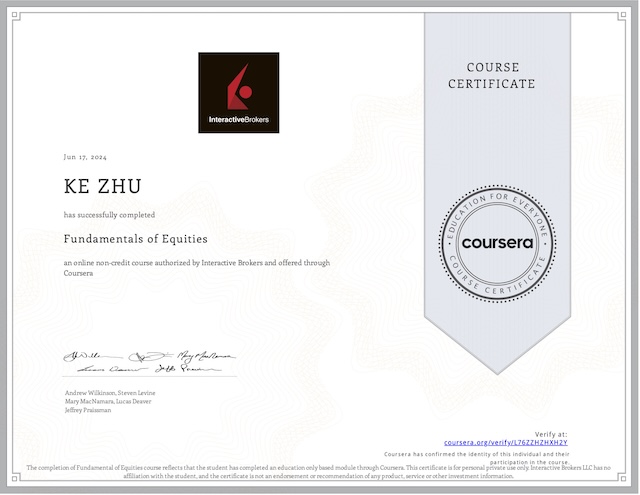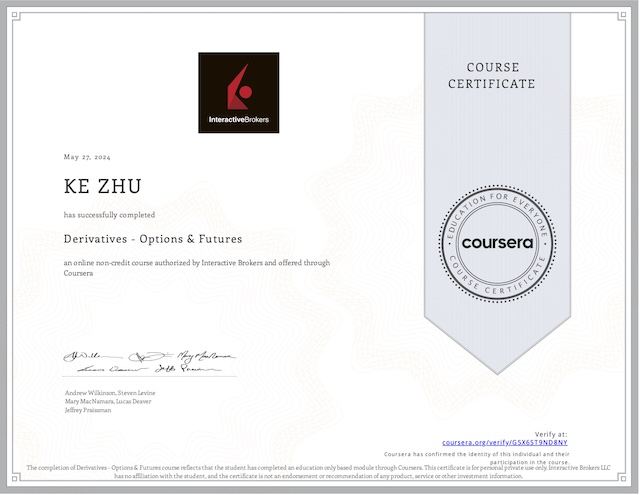How do markets and investors determine the valuation of a company? There is a framework that financial markets used to think about value, which forms the basis of all modern financial markets. We will think of the price of an asset as being given by the present value of all of the future cash flows that are generated by that asset.
In the particular case of a firm, the market value of all of the assets that make up that firm (machinery, buildings, intangible capital, organizational capital, etc). All of those together produce cash flows. So the overall market value of those assets will be given by the present value of the cash flows that those assets are able to generate. The main ingredients include:
| Current cash profits | Revenue, deduct costs, deduct investments. |
| Growth of profits over time | Grow a lot in the future -> more valuable. |
| Risk and timing of cash flows | Riskier cash flows -> less valuable. Cash flows farther in the future -> less valuable. |
We will have to be able to sum cash flows today, tomorrow, and way up to 10 years from now. So we will have to convert future cash into dollars that can be added with cash profits produced today.
Current Cash Profits
Revenue
- Cost
= EBIT (Earnings before interest and taxes)
- Taxes
- Investments
Capital Expenditures
Changes in Net Working Capital (Operating Assets - Operating Liabilities)Current cash profits (or free cash flow) always starts with revenues, which is the amount that a firm obtains from selling goods or services. The operating costs include:
- the cost of goods sold
- sales, advertisements
- salaries paid to the employees
- depreciation
You then deduct all of the operating costs from the revenue to obtain the earnings. We next consider taxes, so we deduct the taxes according to whatever rate is appropriate in the country and in this time period.
Finally we have to take into account the investments, that in order to produce these earnings the firm has to invest. Capital expenditures are investments in buildings, cars, trucks or machinery. Those investments have the characteristic that they are not used up at once in one year. They get reflected in depreciation. Net working capital includes
- operating assets: inventory, accounts receivable.
- operating liabilities: accounts payable.
In terms of investment in net working capital, what we care about is the changes over time. Whether it is the increase in net working capital (an investment), or the reduction in net working capital (a source of cash for the firm).
Determining Cash Flows
This formula summarizes what we have discussed above, however this formula does not include interest expenses and dividends (yet).
Free Cash Flow =
EBIT * (1 - Tax Rate)
+ Depreciation
- Capital Expenditure
- Changes in Net Working CapitalThe depreciation is added back because depreciation is not a cash cost. Depreciation comes about because at some point in the past, say I bought a building, and then over time I am recognizing the cost of that building, but I am not incurring any additional cash outflows for recognizing that cost. Why do we go through the trouble of
- first taking out depreciation in the cost from earnings, and
- then adding them back when we are determining cash flows
And the answer to that is depreciation has tax implications.
Time Value of Money
Cash flows that are produced today are worth more than cash flow that happens ten years from now. We now need to find a way of converting cash flows happening in 10 years into cash flows today.
Present Value = Future Value / (1 + rd)twhere rd is called discount rate, and t stands for time period. If you now have cash occurring at different points in time, you can take each one individually, convert them into value today and then you can add them up.
When cash flows are with constant growth rate g, i.e. CFn+1 = (1 + g) * CFn. This turns out to be a very special case of a sequence of cash flows. The sum of all of those cash flows will simplify:
Present Value = CF1 / (rd - g)Determine Discount Rate
There can be two things that determine the discount rate rd:
- Pure time value: convert money from future into the money today.
- Reflected by the risk-free rate
rf, which is the interest rate paid (annually) by the government for an equivalent time period. One common choice is the US government’s 10-year constant maturity interest rate.
- Reflected by the risk-free rate
- Risk: riskier cash flows are worth less than the safer ones.
- Never include in the discount rate any risk that we can get rid of, i.e. idiosyncratic risk or diversifiable risk. You get rid of risk by placing many small bets as opposite to placing one large bet. Don’t put all the eggs in one basket.
- Include only systematic risk, measured by how the returns of the firm co-vary with the market, i.e. the β of the firm, which tells your how the firm’s return are related to the market’s return.
Putting everything together, we get:
rd = rf + β × (rm - rf)where rf is the pure time value of money. If the β > 1, that means that the firm is more sensitive than the average firm out there to what is happening in the market; otherwise if β < 1, it is less sensitive. (rm - rf) is the market risk premium (measured over very long period of time).
Add Uncertainty
Recall the discount rate we discussed above. However, for very early stage firms that may be obtaining venture capital funds or angel funds and many of those firms fail., we need to be very careful about what we’re accounting for when we’re thinking about both cash flows and discount rates.
Suppose cash flows could be very high with 50% probability, or 0 with 50% probability. Adding uncertainty will NOT change the whole valuation framework that we have been using up until now. Because prices are still the present value of the expected cash flows in the future. All that we would do is take the average of all those possible outcomes and then Net Present Value applies as before.
So if investors hold (reasonably) diversified portfolios, these firms are evaluated using expected cash flows. No change to the Free Cash Flow and the weighted average cost of capital (WACC) approach.
Comparable Valuation
Comparable valuation, sometimes called multiple valuations, is a commonly used technique for the valuation of very early stage startup firms. When you want to know how much a company is worth, you can look around for some other companies that are similar to the company, along some dimensions, but for those other companies you have value from some source, say publicly trade. You want to use that information to learn something about the value of the company you care about.
This is actually a simple procedure:
- Find a set of comparable companies (same industry, similar size, age, risk, etc).
- For each comparable, compute a ratio:
- Firm value / EBITDA (Earnings Before Interest Taxes Depreciation and Amortization, a common proxy for the cash flows that the firm is generating).
- Firm value / EBIT
- Firm value / Sales
- Price / Earnings
- Market capitalization / Net income
- Multiply EBITDA (or EBIT, Sales, etc) of your firm to that ratio
In this way, you use other firm’s ration (say, firm value / EBITDA) and your firm’s fundamental measure (say, EBITDA) to get your firm’s value. This is a very simple procedure that does not require discounting any cash flows. Because in this way, we are using the fact that someone else did all of that discounting to come up with the value of comparable firms. We’re just borrowing the valuation that somebody else did in order to produce our own valuation for our own firm.
However, this type of procedure really relies on finding comparable companies. So if:
- the firm is growing much faster than the comparable firms, or
- the firm has no debt but the comparable firms have lots of debts, or
- the firm is not profitable but the comparable firms are very profitable
Then you’re unlikely to obtain a good estimate for the firm by doing this. This procedure is only robust, if you can find firms that look a lot like the one you are trying to value.
Interpreting Business Plan
Almost always when we are looking at and valuing an early stage company, what entrepreneurs are giving you is a pitch with high / optimistic cash flows (We are a unicorn). However the fact is those companies may fail and many of them do. So the business plan is a statement of ambition, not the expected outcome.
In the real world:
- Only few companies (really) succeed.
- Returns to investors are made on the large success.
- Experts often can’t tell the difference the projects those enormously succeed and those that will ultimately fail.
Considering these, you need to think about how to convert the business plan (the statement of ambition) into the expected cash flow, which is what we’ve been always using in the valuation of companies. You need to take those statements of ambition and adjust them properly. Simply put:
Expectation = Cash Flow in Business Plan × Probability of SuccessAdjust Discount Rate
The probability of success ultimately really comes from the experience of an investor that has built a portfolio and understands for a given company, at a given stage, in a given industry. Suppose a very simple framework: an investor could either get payoff (Cash Out) with a success probability or lose all investments (Cash In), then the net present value (NPV) of the investment is:
NPV = ( Cash Out * Prob of Success ) / ( 1 + rd )T - Cash In
= Cash Out / [ ( 1 + rd )T / Prob of Success ] - Cash InThe required rate of return on each individual investment can be redefined as:
( 1 + rvc )T = ( 1 + rd )T / Prob of Success
⟹ rvc = ( 1 + rd ) / ( Prob of Success )1/T - 1This is still exactly the same framework that we’ve been talking about since day one. The probability of success is higher, the more mature that firm is.
My Certificate
For more on Basics of Valuation, please refer to the wonderful course here https://www.coursera.org/learn/startup-valuation-methods
Related Quick Recap
I am Kesler Zhu, thank you for visiting my website. Check out more course reviews at https://KZHU.ai



